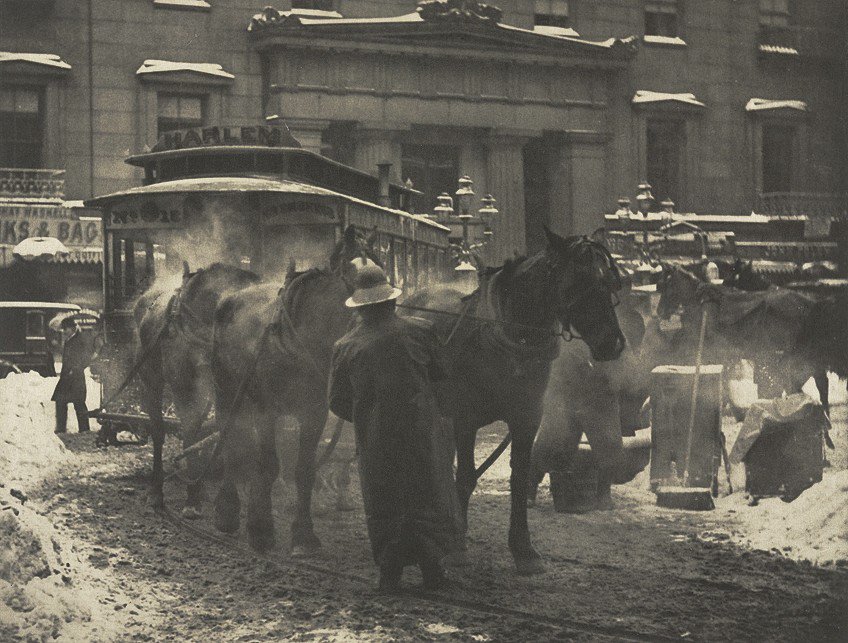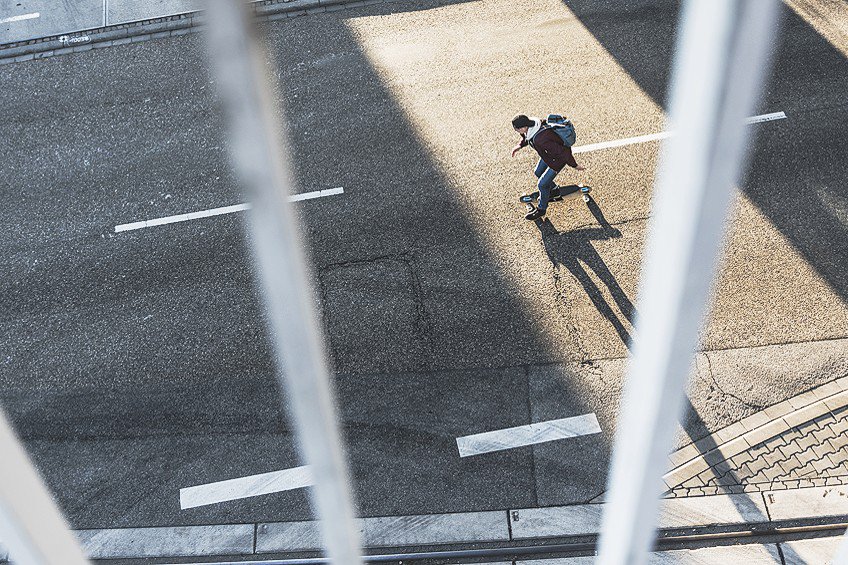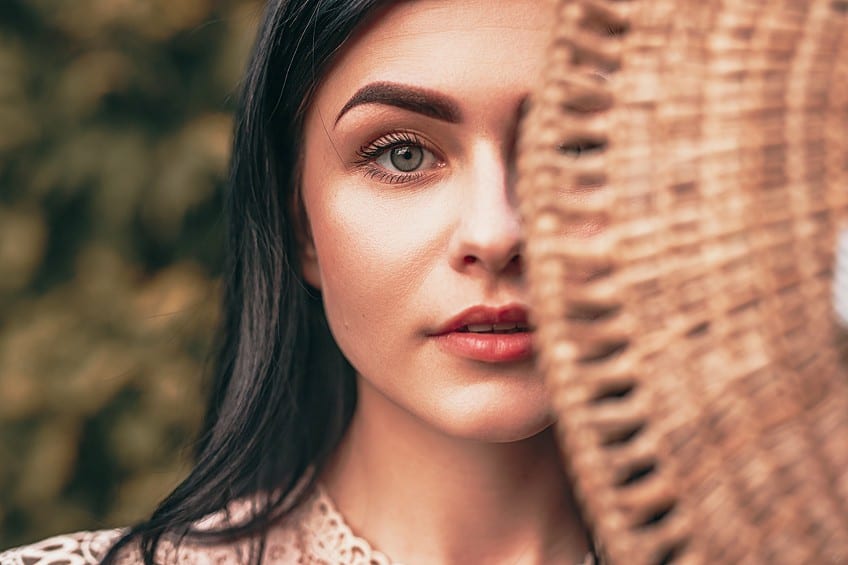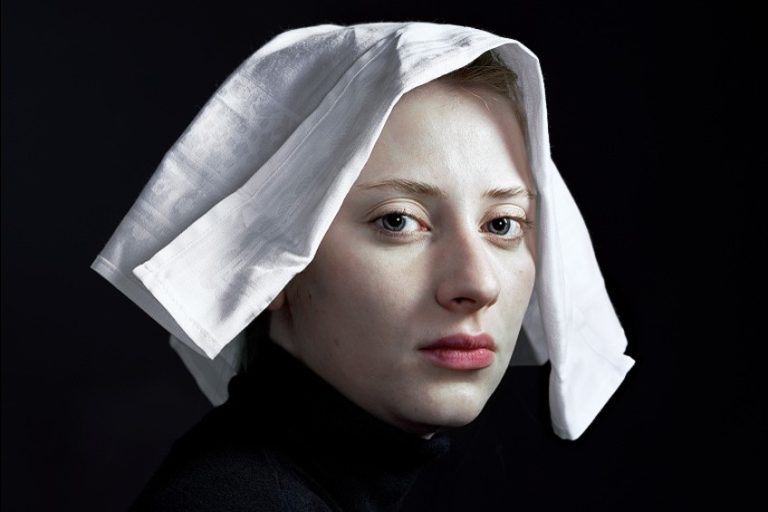Street Photography – Capturing Life in the City
Street photography, often dubbed the art of capturing the soul of the streets, is a captivating and dynamic genre that has evolved through the lens of time. But what is street photography exactly? It is the unscripted, raw, and spontaneous visual narrative of urban life, distilled into frozen moments that speak volumes. For beginners venturing into this captivating realm, mastering street photography is akin to unraveling the enigma of our bustling cities: it is done one frame at a time. In this exploration of urban photography, we will journey through the alleys and avenues, uncovering the essence of street photography that beckons both novice and seasoned photographers alike.
Table of Contents
- 1 What Is Street Photography?
- 2 What Makes a Good Street Photograph?
- 3 Does Street Photography Need People As Subjects?
- 4 What Equipment Is Needed for Street Photography?
- 4.1 Camera: Your Window to the World
- 4.2 Lenses: The Eyes of Your Vision
- 4.3 Tripod: The Steady Hand in Motion
- 4.4 External Flash: Mastering Light
- 4.5 Lens Filters: Enhancing Your Vision
- 4.6 Spare Batteries and Memory Cards: The Lifeline of Continuity
- 4.7 Lens Hood: Shielding Light and Flare
- 4.8 Lens Cleaning Kit: The Upholder of Clarity
- 5 Street Photography Tips and Tricks
- 5.1 Embrace the Beginner’s Mindset
- 5.2 Learn to Observe
- 5.3 Blend In and Stay Unobtrusive
- 5.4 Use Natural Light to Your Advantage
- 5.5 Compose Thoughtfully
- 5.6 Capture Emotions and Interactions
- 5.7 Explore Different Perspectives
- 5.8 Seek Out Interesting Characters
- 5.9 Study the Work of Masters
- 5.10 Be Patient and Persistent
- 5.11 Be Mindful of Your Surroundings
- 5.12 Develop a Personal Style
- 5.13 Edit Thoughtfully
- 5.14 Get Out of Your Comfort Zone
- 5.15 Share Your Work and Seek Feedback
- 6 Respectful Street Photography for Beginners
- 6.1 Obtain Consent When Necessary
- 6.2 Learn the Legalities
- 6.3 Blend In and Be Unobtrusive
- 6.4 Respect Personal Space
- 6.5 Capture Without Exploiting
- 6.6 Be Mindful of Vulnerable Subjects
- 6.7 Respect Cultural Sensitivities
- 6.8 Conceal Your Camera
- 6.9 Reflect on Your Intentions
- 6.10 Show Gratitude and Share
- 6.11 Share Stories, Not Stereotypes
- 7 Frequently Asked Questions
What Is Street Photography?
Street photography is a captivating and multifaceted genre that allows street photographers to dive headfirst into the bustling heart of cities, capturing the raw and authentic moments that define urban life. At its core, street photography is a visual journey through the streets, alleys, and corners of the world, unveiling the essence of our human experience in the metropolis. This exploration into the art of street photography will help us reveal what makes the genre unique, offering a glimpse into the world of the street photographer.

Defining Street Photography
As a form of urban photography, street photography focuses on capturing candid and unplanned moments in public spaces. It is an art of observation, where photographers become keen-eyed documentarians of the everyday. Unlike traditional photography, where subjects are often posed and scenes meticulously arranged, street photographers seek to capture life as it unfolds naturally, unscripted, and unfiltered.
The streets, with their constant motion and vibrant personalities, serve as a canvas for street photographers.
The genre encompasses a wide range of subjects – from people navigating the urban jungle to the architectural wonders that shape the cityscape. It is about finding intrigue in the beauty that makes up the ordinary and overlooked.
The Perspective of a Street Photographer
A street photographer is more than just someone that takes photos; they are storytellers of the cityscape that surrounds us. Armed with a camera and an acute sense of observation, they navigate the streets, blending into the urban tapestry, and become part of the scene. This unobtrusive approach allows them to capture authentic moments without influence or disturbing their subjects.

Street photographers are patient observers. They wait for the right moment, the perfect composition, and the convergence of elements that tell a compelling story. Whether it is a fleeting expression, a serendipitous juxtaposition, or the play of light and shadow, street photographers are attuned to the visual poetry of the streets.
The Essence of Street Photography
Street photography, at its core, is primarily about capturing the essence of a city’s landscape and the people that inhabit it. It is a visual record of the rhythms of urban life, from the joyous celebrations to the quiet moments of reflection. Street photographers seek to freeze these moments in time, preserving them for posterity and offering viewers a glimpse into the soul of the city.
In street photography, the mundane can become extraordinary.
A mundane street corner can transform into a stage for an impromptu dance performance, a decrepit alleyway can hold the secrets of generations, and a passerby can reveal a world of emotions with a single glance. The beauty lies in the unpredictability and the genuine moments that emerge from the chaos of city life.
Urban Photography: Beyond the Surface
Urban photography, of which street photography is a significant subset, goes beyond capturing buildings and cityscapes. It provides a candid exploration into the lives and routines of the people who inhabit such environments. While architectural details are essential elements, it is the human element that breathes life into urban photography.

Street photographers often become intimate observers of human behavior. They capture the laughter of friends sharing a meal at a sidewalk cafe, the solitude of a commuter lost in thought on a crowded subway, and the determination of a street performer entertaining a captivated audience. These images serve as a window into the myriad experiences that make up practically any urban landscape, as well as what makes it unique from similar environments.
The Street Photoshoot: A Dance of Light and Composition
A street photoshoot is an exploration of the unexpected. Photographers venture out into the streets, armed with their camera and an open mind, ready to embrace the serendipity of the urban landscape. Every street photoshoot is an adventure, a quest to find those fleeting moments that tell a compelling story. One of the more crucial elements in street photography would have to be lighting and how it affects the subject.
The interaction of light and shadow can transform a mundane scene into a dramatic tableau.
Street photographers often seek out interesting lighting conditions, whether it is the soft glow of dawn, the harsh midday sun, or the warm hues of twilight, to create captivating compositions. Another essential aspect of street photography comes in the form of composition. Photographers must frame their shots in a way that draws the viewer’s eye to the main subject while incorporating the surrounding elements to provide context. Various methods, including leading lines, framing, and the rule of thirds, are often employed to create visually engaging images.
What Makes a Good Street Photograph?
A good street photography is like a poem etched in light and shadow, a visual narrative that tells the stories of cities and the people who inhabit them. It is a fleeting, seemingly imperceivable moment that is frozen in time, capturing the raw ethos of urban life in all its unfiltered and unmanicured glory. But what makes a street photograph truly exceptional, standing out among the countless snapshots of the streets? In this exploration, we will delve into the alchemy of crafting a good street photograph, unraveling the key elements that elevate it beyond the ordinary while touching upon the unique realm of street style photography.

Authenticity and Candor
At the heart of every good street photograph lies authenticity. Unlike staged portraits or meticulously composed scenes, street photography thrives on capturing candid moments These are unscripted, unposed instances of life that unfold naturally, often with the subjects unaware of the camera’s presence.
It is the authenticity of these moments that infuse a photograph with a sense of genuine connection to the world it portrays.
A good street photograph captures the laughter of friends sharing a joke on a street corner, the contemplative gaze of a lone pedestrian lost in thought, or the spontaneous embrace of a couple amidst a bustling market. These slices of life resonate because they are relatable, offering a window into the rich tapestry of human experiences in the urban environment.
Keen Observation and Timing
Street photographers are the ultimate observers of life’s unfolding dramas. They possess a keen eye for detail and an innate ability to anticipate and capture the decisive moment. In the midst of bustling streets, they become silent witnesses to the theater of life, waiting for the perfect confluence of elements that will breathe life into their frame. The seasoned street photographer might notice the fleeting interplay of light and shadow on a city sidewalk, the serendipitous alignment of passersby with architectural elements, or the rhythm of a street performer’s movements as they captivate a gathered crowd. It is the combination of this observation and impeccable timing that elevates a photograph from mere documentation to a work of art.

The Human Connection
While the urban landscape provides the stage, it is the human element that takes center stage in a good street photograph. People are not merely subjects; they are the lifeblood of street photography.
Their expressions, interactions, and emotions are the palette with which street photographers craft their visual stories.
A good street photograph may capture the intensity of a protest rally, the tender moment shared between a parent and their child, or the enigmatic glance between strangers on a busy street corner. These images resonate because they evoke empathy, allowing viewers to connect with the human experiences they depict.
Street Style Photography: A Unique Subgenre
Within the diverse realm of street photography, a distinctive subgenre has emerged: street style photography. Street style photographers focus on capturing the fashion and personal style of individuals on the streets. These images are more than just showcases of clothing; they are visual records of self-expression and cultural trends in the urban environment.

Street style photography has transcended its roots in the streets and has become a significant influence on the fashion industry. It celebrates the diversity of personal style, challenging conventional norms and highlighting the creative ways individuals express themselves through clothing. Each street style photograph is a testament to the dynamic interplay of fashion and urban culture.
Composition and Visual Cohesion
A good street photograph is more than just a snapshot; it is a carefully composed visual story. Composition plays a crucial role in elevating a photograph to new heights. Street photographers use various methods and techniques such as framing, leading lines, as well as the rule of thirds to create compositions that are both visually engaging and balanced. Composition is not just about the arrangement of elements within the frame; it is also about the ability to isolate the subject amidst the chaos of the streets.
A well-composed photograph is able to guide your audience’s eye, leading them to the focal point and allowing them to explore the intended narrative within the image.
Emotional Impact and Storytelling
A good street photograph tells a story or evokes emotion. It transports viewers into the moment, allowing them to feel the atmosphere, connect with the subjects, or ponder the circumstances surrounding the image. The emotional impact of a photograph can range from joy and laughter to contemplation or even a sense of intrigue.

Street photographers often aim to create a sense of narrative within a single frame. They seek to capture not just a moment in time but the essence of a larger story. It is about compelling viewers to imagine what happened before and after the photograph was taken, engaging them in the storytelling process.
Does Street Photography Need People As Subjects?
Street photography, as a captivating and diverse genre, unfolds as a visual journey through the streets, alleys, and corners of our cities. Yet, a pertinent question arises: Does street photography necessitate the presence of people as subjects? While human figures often form the focal point of many iconic street photographs, the genre is more versatile than it may initially seem.
In this exploration, we will delve into the dynamic world of street photography and the role of people as subjects, as well as explore the captivating possibilities that arise when they are absent.
People As the Heartbeat of Urban Life
Human subjects are undeniably the lifeblood of many street photographs. They provide depth, context, and emotional resonance to the images, weaving stories of everyday life, candid emotions, and the intricate tapestry of city existence. Street photographers often strive to capture the candid expressions of strangers, the connections between passersby, and the unique characters that populate the urban landscape.

These elements add layers of intrigue to street photographs, with ample relatability that allows the viewer to connect with the narratives you want to tell. In many ways, people serve as a dynamic and ever-changing canvas for the street photographer. Their interactions, emotions, and movements become the raw material from which the photographer crafts their visual stories. In bustling cities, streets transform into stages where the human drama unfolds, ripe for the discerning eye of the photographer.
The Human Element: Conveying Emotion and Story
One of the strengths of including people in street photography is the ability to convey a wide range of emotions and stories. For instance, the subtle expression of a musician engrossed in their melody can evoke powerful emotions in viewers.
People in street photography are not mere props; they are conduits of emotion and meaning.
They embody the essence of urban life, and their presence infuses photographs with a sense of humanity. Through nothing more than their gestures and expressions, they are able to create narratives that deeply resonate with your viewers.
When People Are Absent: Exploring the Urban Landscape
While people are undeniably compelling subjects in street photography, the absence of human figures can also yield powerful and evocative images. The empty streets, quiet alleys, and deserted urban landscapes take on a character of their own, inviting viewers to explore the silence and solitude of the city. Photographs of empty streets can convey a sense of nostalgia, longing, or anticipation. They allow viewers to project their own stories onto the frame, pondering the mysteries of the urban environment when devoid of human presence.

The Stillness of Urban Solitude
The absence of people in street photography can accentuate the stillness and solitude of the city. It offers a contemplative space where viewers can reflect on the stark contrast between the bustling urban life and the moments of tranquility that exist in between. Photographs of empty park benches, deserted plazas, or quiet alleyways speak to the moments of respite and introspection that urban spaces provide.
They capture the ebb and flow of the city, the brief interludes of calm amidst the constant motion.
Urban Geometry and Architecture As Subjects
When people are absent from street photographs, the focus often shifts to the urban environment itself. The architectural details coinciding with geometric patterns, and interaction between light and shadow take center stage. These elements become subjects in their own right, revealing the aesthetic and structural beauty of the city.

Photographers explore the symmetry of buildings, the play of lines and angles, and the interplay of textures. The absence of people allows for a more intimate examination of the city’s physical form, revealing the hidden intricacies that often go unnoticed in the hustle and bustle of daily life.
Street Style Photography: An Alternative Focus
For those who wish to capture the essence of urban life without necessarily including people as subjects, street style photography offers a compelling alternative. Street style photographers focus on capturing the fashion and personal style of individuals on the streets.
These images highlight the diversity of clothing choices and serve as a form of self-expression within the urban environment.
Street style photography celebrates the creativity and individuality of people without necessarily delving into their personal narratives. It offers a unique perspective on urban culture, showcasing how individuals use clothing as a means of self-identity and artistic expression.
What Equipment Is Needed for Street Photography?
Street photography is a dynamic and captivating genre that demands the right equipment to successfully capture the essence of everyday life in our urban environments. The streets are a vibrant theater of candid moments, fleeting emotions, and striking visuals, and to seize these slices of life, you need gear that can keep up with the fast-paced and unpredictable nature of the streets. In this comprehensive guide, we will explore the essential equipment needed for street photography and provide explanations on how each piece is used to craft memorable and impactful images.

Camera: Your Window to the World
Your camera can be seen as the beating heart and soul of street photography. It is your window into the world, your canvas for creativity, and your conduit for storytelling. When selecting a camera, there are several factors to consider:
- Compactness: Street photographers often opt for compact or mirrorless cameras due to their portability and discretion. Unsurprisingly, using a smaller camera can be far less intimidating to those you wish to photograph, making it easier to capture candid moments.
- Manual Controls: Cameras with manual settings provide more creative control. The ability to alter aperture, shutter speed, and ISO settings on the fly provides you with the chance to adapt to changing light conditions when needed.
- Fast Autofocus: In the dynamic environment of the streets, quick and accurate autofocus is crucial for capturing subjects in motion.
- Silent Mode: Some cameras have a silent shooting mode, which minimizes the shutter noise. This feature is especially valuable when you want to blend into the surroundings and capture candid moments without becoming a distraction to those around you.
- High ISO Performance: Street photography often occurs in various lighting conditions, from bright sunlight to dimly lit alleyways. Cameras with good high ISO performances allow for clean, low-noise images in low-light situations.
Lenses: The Eyes of Your Vision
Lenses are the key to altering your perspective and framing your shots in street photography. Depending on your preferences and style, you may opt for various types of lenses.
- Wide-Angle Lens (24mm – 35mm): These lenses are ideal for capturing expansive scenes, emphasizing the urban environment, and including more elements in your frame. They are perfect for conveying a sense of place and context.
- Standard Prime (35mm – 50mm): These lenses offer a field of view similar to that of the human eye, making them versatile for street photography. They strike a balance between a broad perspective and capturing subjects at a comfortable distance.
- Telephoto Lens (85mm and above): Telephoto lenses allow you to shoot from a distance, capturing candid moments without intruding on your subjects. They are great for street portraits and scenes where you need some separation from your subjects.
- Zoom Lens (24mm – 70mm): Zoom lenses offer flexibility by covering a range of focal lengths. While they may be larger and less discreet, they are versatile for a variety of situations, allowing you to zoom in for details or zoom out for wider scenes.

Tripod: The Steady Hand in Motion
Although street photography typically involves handheld shooting, a tripod can be a valuable addition, particularly when you want to experiment with long exposure shots. A tripod provides stability during long exposures, allowing you to capture dynamic scenes with controlled motion blur, such as the streaking lights of passing cars or the flow of crowds.
Looking for a lightweight and compact tripod for easy mobility.
External Flash: Mastering Light
Street photography often presents lighting challenges, from harsh shadows to low light conditions. An external flash can be a valuable tool for controlling and supplementing the available light. It not only brightens your subjects in low-light situations but also allows for creative lighting effects, such as illuminating subjects against a dark background. Look for a flash with adjustable power and a tiltable head for greater control over the direction and intensity of light.
Lens Filters: Enhancing Your Vision
Lens filters can enhance the quality of your street photography in the following ways:
- UV Filters: UV filters primarily serve to protect your lens from dust, scratches, and minor impacts, which can be a common hazard in street photography.
- Polarizing Filters: These filters reduce reflection and glare, enhancing color saturation and contrast in your photos. They are particularly useful when shooting through glass, water, or in bright sunlight.
- Neutral Density (ND) Filters: ND filters reduce the amount of light entering your lens, enabling you to use wider apertures or slower shutter speeds in bright conditions. They are invaluable for achieving long exposures in daylight, which can result in captivating motion effects.
Spare Batteries and Memory Cards: The Lifeline of Continuity
Street photography can be demanding on your camera’s battery life, particularly if you are using live view or shooting video. To ensure you do not miss critical moments, carry spare batteries.
Additionally, ample memory cards are essential to prevent the frustration of running out of storage space while shooting.
Lens Hood: Shielding Light and Flare
A Lens hood is a simple yet invaluable accessory. It shields your lens from stray light, reducing lens flare and preventing unwanted glare. This ensures your images remain clear and free from artifacts, even when shooting in challenging lighting conditions.

Lens Cleaning Kit: The Upholder of Clarity
Dust, smudges, and fingerprints can degrade the quality of your images. A lens cleaning kit, consisting of a blower, cleaning solution, a microfibre cloth, keeps your gear in optimal condition.
Regular maintenance ensures that your photos remain sharp, clear, and free from unwanted imperfections.
Street Photography Tips and Tricks
Street photography is a dynamic and exhilarating genre that allows photographers to document the pulse of the city, capturing candid moments, striking scenes, and the authentic emotions of everyday life. Learning the art of street photography for beginners can be an effective way to capture candid moments and urban life with a fresh perspective. In this comprehensive guide, we will explore a collection of tips and tricks to help you navigate the world of street photography, regardless of your level of experience.

Embrace the Beginner’s Mindset
For those new to street photography, it is essential to approach the craft with an open and curious mind. Street photography is about exploration, discovery, and the unexpected. Embrace the uncertainty and the surprises that come your way.
Be a student of the streets, eager to learn and grow with every shot.
Learn to Observe
Observation is a fundamental skill in street photography. Spend time people-watching and studying the scenes around you. Look for interesting characters, interactions, and moments that tell a story.

Blend In and Stay Unobtrusive
To capture genuine moments, it is crucial to blend in with the environment. Dress inconspicuously, avoid drawing attention to yourself, and move quietly. Being unobtrusive allows you to capture people’s authentic expressions and actions.
Use Natural Light to Your Advantage
Street photographers often rely on natural light. Experiment with different lighting conditions, such as the soft glow of dawn or the dramatic play of light and shadow during golden hour. Learn to see how light shapes and enhances your scenes.

Compose Thoughtfully
Pay attention to composition. Utilize techniques such as leading lines, framing, and the rule of thirds to create visually engaging photographs. Composing your shots thoughtfully can elevate them from snapshots to compelling images.
Capture Emotions and Interactions
Street photography is about capturing the emotions, interactions, and stories that unfold in public spaces. Focus on the expressions, gestures, and connections between people. Look for scenes that evoke meaning and emotion.

Explore Different Perspectives
Experiment with different angles and perspectives. Shoot from ground level, capture reflections in puddles, or find elevated vantage points. Varied perspectives can offer unique and engaging viewpoints of the streets.
Seek Out Interesting Characters
The streets are full of fascinating characters. Whether it is a street performer, a vendor with a colorful personality, or a unique-looking passerby, keep an eye out for intriguing subjects who can be the focal point of your images.

Study the Work of Masters
Learning from the masters of street photography can be an invaluable source of inspiration and knowledge. Study the works of iconic photographers like Henri Cartier-Bresson, Daido Moriyama, and Garry Winogrand.
Analyze their compositions, techniques, and their ability to capture decisive moments.
Be Patient and Persistent
Street photography often requires patience. Wait for the right moment to unfold and be prepared to take multiple shots to ensure you capture the perfect one. Persistence is key, as street photography can involve numerous attempts to get the desired shot.
Be Mindful of Your Surroundings
Stay aware of your surroundings. Pay attention to your safety and the safety of your gear. Keep an eye on traffic, people, and any potential hazards while you shoot.
Develop a Personal Style
Street photography is not just about capturing the streets; it is about expressing your unique perspective on them. Develop your own personal style by experimenting with different techniques, subject matters, and editing styles.
Your distinct voice will set your work apart.
Edit Thoughtfully
Editing is an essential part of the street photography process. Take the time to review and select your best shots. Consider Post-processing techniques that enhance the mood and storytelling of your images while preserving their authenticity.

Get Out of Your Comfort Zone
Do not limit yourself to a single location or style. Explore different neighborhoods, cities, and cultures. Step out of your comfort zone and challenge yourself to capture a wide range of scenes and subjects.
Share your street photography with others. Post your work on social media, photography forums, or in local exhibitions. Seek feedback from fellow photographers and the wider community. Constructive criticism can not only help you grow, but help you refine your skills too.

Respectful Street Photography for Beginners
Street photography is an art form that allows us to document the vibrancy of everyday life in our cities. However, this creative pursuit must be undertaken with sensitivity and respect, both for your subjects and the surrounding environment. For beginners in the world of street photography, it is essential to learn how to capture candid moments while being considerate and respectful.
In this guide, we will explore the principle and practices of respectful street photography, ensuring you are not only creating compelling images but also foster a positive and ethical approach to your craft.
Obtain Consent When Necessary
While street photography often involves candid shots of people in public spaces, there are situations where consent is appropriate and even required. If your subject is in a vulnerable or private setting, or if you intend to capture their identity or emotions intimately, it is polite to ask for their permission. Whether through a gesture, a nod, or a simple question, gaining consent shows respect for your subjects.

Learn the Legalities
Understanding the laws and regulations around street photography in your area is crucial. Different regions have different rules regarding public photography and privacy rights. Before you get out onto the streets, be sure to familiarize yourself with the legal framework in that particular location to ensure you are operating within the bounds of the local law.
Blend In and Be Unobtrusive
One of the key principles of respectful street photography is to be inconspicuous. The objective is to avoid drawing attention to yourself, just enough so that you can still capture the candid moments that surround you. Dress in a way that does not stand out, avoid sudden movements, and move quietly.
When you blend in with the surroundings, your subjects are less likely to notice you while being more likely to behave naturally.
Respect Personal Space
When photographing strangers in public spaces, be mindful of their personal space. Avoid getting too close to your subject, leading to you invading their privacy. Use appropriate focal lengths and compositions to capture your subjects without making them feel uncomfortable.
Capture Without Exploiting
Street photography can be a fine line between capturing genuine moments and exploiting people’s vulnerability or misfortune. As a respectful street photographer, your intention should be to document life without taking advantage of your subjects.
Avoid sensationalism, stereotypes, or any form of intrusive imagery.
Be Mindful of Vulnerable Subjects
Vulnerable or marginalized populations deserve extra consideration in street photography. Subjects such as the homeless, children, and people with disabilities may require a heightened level of respect and discretion. Always prioritize the dignity and well-being of these individuals over your desire for a photograph.

Respect Cultural Sensitivities
Different cultures have varying norms and attitudes towards photography. When taking photos in culturally diverse environments, be aware of customs and sensitivities that are upheld by the locals.
Some communities may consider photography intrusive or disrespectful, and it is important to respect their wishes.
Conceal Your Camera
To capture candid moments, it is often best to conceal your camera or use a small, unobtrusive one. Larger and more conspicuous cameras can make your subject self-conscious and affect their natural behavior. Many street photographers opt for compact cameras or even smartphone cameras for their discretion.

Reflect on Your Intentions
Before taking a photo, take a moment to reflect on your intentions. Ask yourself why you want to capture a particular moment and what story it tells. This self-awareness can help guide your choices and ensure they are respectful.
If you engage with your subject after taking their photos, be sure to express gratitude. Sharing your images with them or providing prints, if they are comfortable with it, can be a meaningful gesture of respect and appreciation.
Use your street photography as a means to challenge stereotypes and share diverse stories. Your photographs can contribute to a more nuanced understanding of the urban environment and the people who inhabit it.

Closing off on our snapshot into the world of street photography, this eclectic subgenre stands as a vibrant and dynamic form of expression, offering a world into the souls of our cities. Through candid moments, evocative scenes, and authentic emotions, it reveals the beauty and complexity of everyday life. Street photographers are not just image-makers; they are storytellers, documentarians, and urban poets. The allure of street photography lies in its ability to freeze fleeting moments and breathe life into the ordinary, turning the mundane into art.
Frequently Asked Questions
What Is Street Photography?
Street photography is a genre of photography that focuses on capturing candid moments and scenes in public places, often in urban environments. It aims to document the everyday lives of people and the essence of the streets.
Is Street Photography Legal?
The legality of street photography depends on the laws and regulations in your region. In many places, taking photographs in public spaces is legal, but there may be restrictions on where you can shoot and how you can use the images. It is crucial that you remain aware of local laws and respect people’s right to privacy.
How Do I Approach Strangers for Street Portraits?
To approach strangers for street portraits, it is essential to be polite and respectful. Start with a friendly greeting, explain your intentions, and ask for permission. Many people are open to being photographed if you approach them with kindness and a clear explanation of your project.
Duncan completed his diploma in Film and TV production at CityVarsity in 2018. After graduation, he continued to delve into the world of filmmaking and developed a strong interest in writing. Since completing his studies, he has worked as a freelance videographer, filming a diverse range of content including music videos, fashion shoots, short films, advertisements, and weddings. Along the way, he has received several awards from film festivals, both locally and internationally. Despite his success in filmmaking, Duncan still finds peace and clarity in writing articles during his breaks between filming projects.
Duncan has worked as a content writer and video editor for artincontext.org since 2020. He writes blog posts in the fields of photography and videography and edits videos for our Art in Context YouTube channel. He has extensive knowledge of videography and photography due to his videography/film studies and extensive experience cutting and editing videos, as well as his professional work as a filmmaker.
Learn more about Duncan van der Merwe and the Art in Context Team.
Cite this Article
Duncan, van der Merwe, “Street Photography – Capturing Life in the City.” Art in Context. November 9, 2023. URL: https://artincontext.org/street-photography/
van der Merwe, D. (2023, 9 November). Street Photography – Capturing Life in the City. Art in Context. https://artincontext.org/street-photography/
van der Merwe, Duncan. “Street Photography – Capturing Life in the City.” Art in Context, November 9, 2023. https://artincontext.org/street-photography/.









